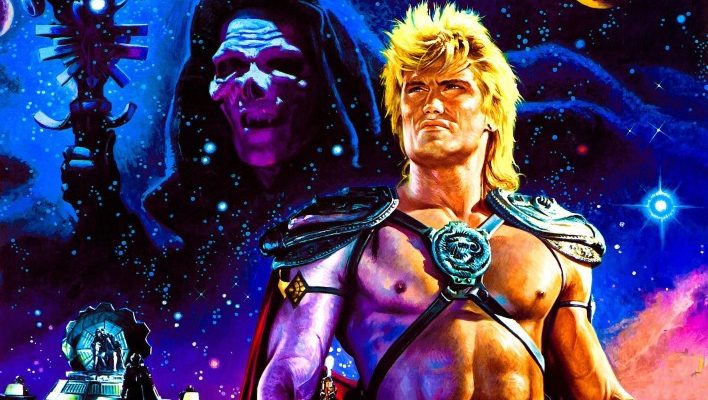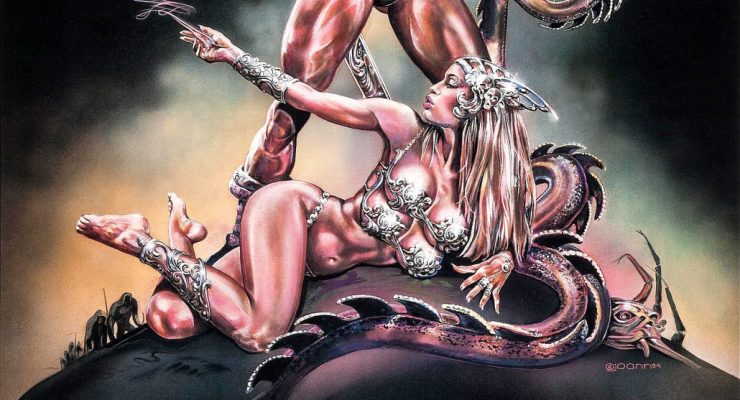Paul Risker on America’s ‘rape’ of the Scandinavian crime drama…
The American remake of The Girl with the Dragon Tattoo (2011), adapted from Steig Larsson’s first novel of his Millennium Trilogy, follows on the heels of Sweden’s 2009 adaptation and forms part of a trend that has seen a number of Scandinavian crime dramas adapted into the English language.
This year saw the release of Contraband, directed by Baltasar Kormákur, the star of the original Icelandic Reykjavík-Rotterdam, and rumors circulate of a remake of Headhunters (2012), adapted from Norwegian crime writer Jo Nesbø’s book of the same name. Meanwhile, the acclaimed Danish television phenomenon The Killing, remade for American television, is preparing for its third season, whilst the second two installments of Larsson’s Millennium Trilogy, The Girl Who Played With Fire and The Girl Who Kicked the Hornet’s Nest, have been announced.
Prior to the international interest in Scandinavian film and television crime dramas, a number of crime writers had been making important contributions to Scandinavian crime literature. 1991 witnessed the debut of disgruntled Swedish detective Kurt Wallander in Henning Mankell’s Faceless Killers, since which time three actors have portrayed the detective, including Kenneth Branagh for the BBC television series.
Since Mankell’s arrival on the scene, writers such as Håkan Nesser, Camilla Läckberg and Jo Nesbø have become bright beacons on the crime literature landscape. The adaptations of works by Mankell, Larsson and Nesbø have further placed Scandinavian crime fiction in the international spotlight, with Martin Scorsese rumored to be directing the American adaptation of Jo Nesbø’s 2010 novel The Snowman.
Not too dissimilar to a group of Roman Senators, we have in our white togas stood and hollered our objections to what we assume in our superior position of foresight will inevitably be inferior remakes, perceiving this recent trend as the rape of Scandinavian crime fiction. Such thinking however naively fails to observe the fact that American remakes of foreign films is not a new phenomenon, and American producers have been geographically centred in the past, with a particular focus on Asian cinema.
Kurosawa and the American Western
As far back as the 1960s, it was the Western, considered alongside the gangster film an American genre, that remade two of Akira Kurosawa’s samurai films.
The Magnificent Seven (1960) was an official remake of Kurosawa’s Seven Samurai (1954), whilst four years later Italian director Sergio Leone directed A Fistful of Dollars (1964), the unofficial remake of Yojimbo (1961). Kurosawa’s samurai films provided the template for two of the genre’s iconic westerns, the latter signaling the birth of the cynical Spaghetti western, at what was to be the expense of the classic western.
The Magnificent Seven conformed to the traditions of the traditional western, distinguished by its romanticism of the American West and the idealized hero, or in this case heroes. Sergio Leone’s A Fistful of Dollars would subvert this romantic sentiment in a way that he believed only a foreign director could, just as Italian directors were bound to romanticise ancient Rome.
It was Akira Kurosawa’s Yojimbo that provided Leone with the plot for his first Spaghetti western, and it was Toshirô Mifune’s ronin samurai that supplied the anti-hero archetype that then television star Clint Eastwood as ‘The Man with No Name’ would come to embody.
To assert that Kurosawa and Mifune were responsible for planting the seeds that would transform the western genre in the 1960s is naive. Both Kurosawa and Leone were inspired by the westerns of John Ford. In fact the plot of Yojimbo which sees the lone samurai enter a small town whose inhabitants are positioned between two warring families is reminiscent of the generic construction of many westerns: the lone gunfighter arriving in a small town where he defends the townsfolk associated with good wholesome family values.
Kurosawa inspired by the American western transposed its generic plot to feudal Japan, and reimagined the western in a very eastern way through the setting and the customs of his native Japanese ancestors; subverting the heroic through the actions of Toshiro Mifune’s anti-hero.
Three years after Yojimbo’s release, Sergio Leone then transposed the film from feudal Japan to the American West, and in so doing introduced to the western genre the archetype that would be prevalent in American westerns for the coming decades. From a certain perspective, Leone returned the anti-hero to the American west from where he had originally been part inspired.
The events of the 1960s depict a mutually beneficial relationship between American, Japanese and Italian directors, sourcing from one another inspiration, emphasised by Kurosawa’s fondness of the American western and his admiration for Sturges’ The Magnificent Seven. If only Leone and the producers of A Fistful of Dollars had acquired the rights as had Sturges and his producers, this relationship would have been reinforced. Rather Yojimbo’s producers successfully filed a lawsuit and Kurosawa with a touch of irony wrote to Leone, “It is a very fine film, but it is my film.”
Kurosawa was correct in so far as A Fistful of Dollars was his film. What served Sturges and Leone so well was the American west as iconography. The act of transposing these samurai films from feudal Japan to the American west, whilst the narratives are similar, the settings are so distinctly eastern and western that both original and remake creates a sense of feeling quite distinct from the other. Without this they would have been simple remakes, the only distinction an alternative cast and English dialogue.
Unlike in the four films of the 1960s in which distinct settings could be manipulated by the filmmakers, this has not been available to American remakes of either Asian horror or more recently Scandinavian crime drama. Transposing the Asian and now the Scandinavian urban to the American urban does not provide such a striking distinction. The risk of these remakes as underwhelming copies, offering no significant contribution to American cinema when compared to the two iconic westerns of the 1960s is a genuine concern.
Asian Horror
The nineties and noughties witnessed the emergence of Asian horror with films including Ringu (1998), Dark Water (2002), The Grudge (2002), The Eye (2002), One Missed Call (2003) and Shutter (2004). These films drew the attention of the international audience as terrifying entries in the horror repertoire, and a number of these films were thus remade.
Whilst the 1960s saw two remakes that were important contributions to an American genre, the remakes of a selection of Asian horror films have struggled to leave an impression on American cinema. These films have almost certainly been overshadowed by torture porn and the found footage film, two sub-genres that have defined recent American horror cinema. Without the aid of setting to help these directors create a striking distinction in contrast to the Asian originals, they were frequently perceived as underwhelming remakes, only an alternative cast and English dialogue to create any distinction.
A fair assessment would be that they were a set of business decisions, motivated by the idea of taking a successful foreign film with template in hand, recast with American actors with English dialogue, and then marketed to the audience dissuaded from seeing the subtitled originals; using the critical praise the foreign originals garnered to entice the target audience.
Closer to Home
In hindsight, foreign films remade for the English speaking audience is a common practice, and any controversy regarding the volume of remakes of Scandinavian crime fiction should not conveniently misplace or forget the geographical focus of Asian cinema by American producers.
The recent remakes of Scandinavian crime drama are suggestive of the fact that American producers will continue to look beyond its own borders for American adaptations. The east has not been forgotten, with Spike Lee directing the remake of Chan-wook Park’s Oldboy, the second film in his ‘Vengeance trilogy.’ Nor should the tendency of American producers to remake American films be forgotten, of which a number of notable horror films including Texas Chainsaw Massacre (2003), Halloween (2007) and Friday the 13th (2009) are all remakes of what general consensus considers were superior originals. Of course more can be added to the charge sheet, not limited to the horror genre.
Final Thoughts
The impact of the Scandinavian remakes will however be of particular interest. Whilst The Girl with the Dragon Tattoo and Let Me In (2010) received critical praise, the almost identical plots were keenly noted in reviews, and this led to critics urging readers to seek out the originals.
What is confirmed therefore is that these films are not remade for fans of the originals, with the opportunity to see an alternative approach to the source material, but to produce an English language version. If this is the case, how much of a contribution can they offer to American cinema?
Any reinterpretation of the original source material and the creative choices made by the director, writers and producers of the original would transform the remake, and make it distinct. Aside from The Magnificent Seven and A Fistful of Dollars, John Carpenter’s The Thing (1982) reintroduced into his remake of The Thing from Another World (1951) ideas from the short story Who Goes There? by John W. Campbell Jr, on which both films are based. This suggests that a remake is not wholly negative, and can be an important contribution to cinema, as evidenced by both the 1960s westerns and the two versions of Who Goes There? both considered classic science-fiction movies in their own right. The various adaptations of Bram Stoker’s iconic novel Dracula (1897) are further examples of this truth. Collectively the German Expressionist Nosferatu (1922), Bela Lugosi’s turn in Dracula (1931), Werner Herzog’s Nosferatu (1979) and Hammer Horror’s Dracula (1958) played by Christopher Lee, to the most faithful adaptation by Francis Ford Coppola, are all are distinct from one another, manipulating the source material and concept of vampires to create an individual retelling of the Dracula story.
Paul Risker is a freelance writer and contributor to Flickering Myth, Scream The Horror Magazine and The London Film Review.











